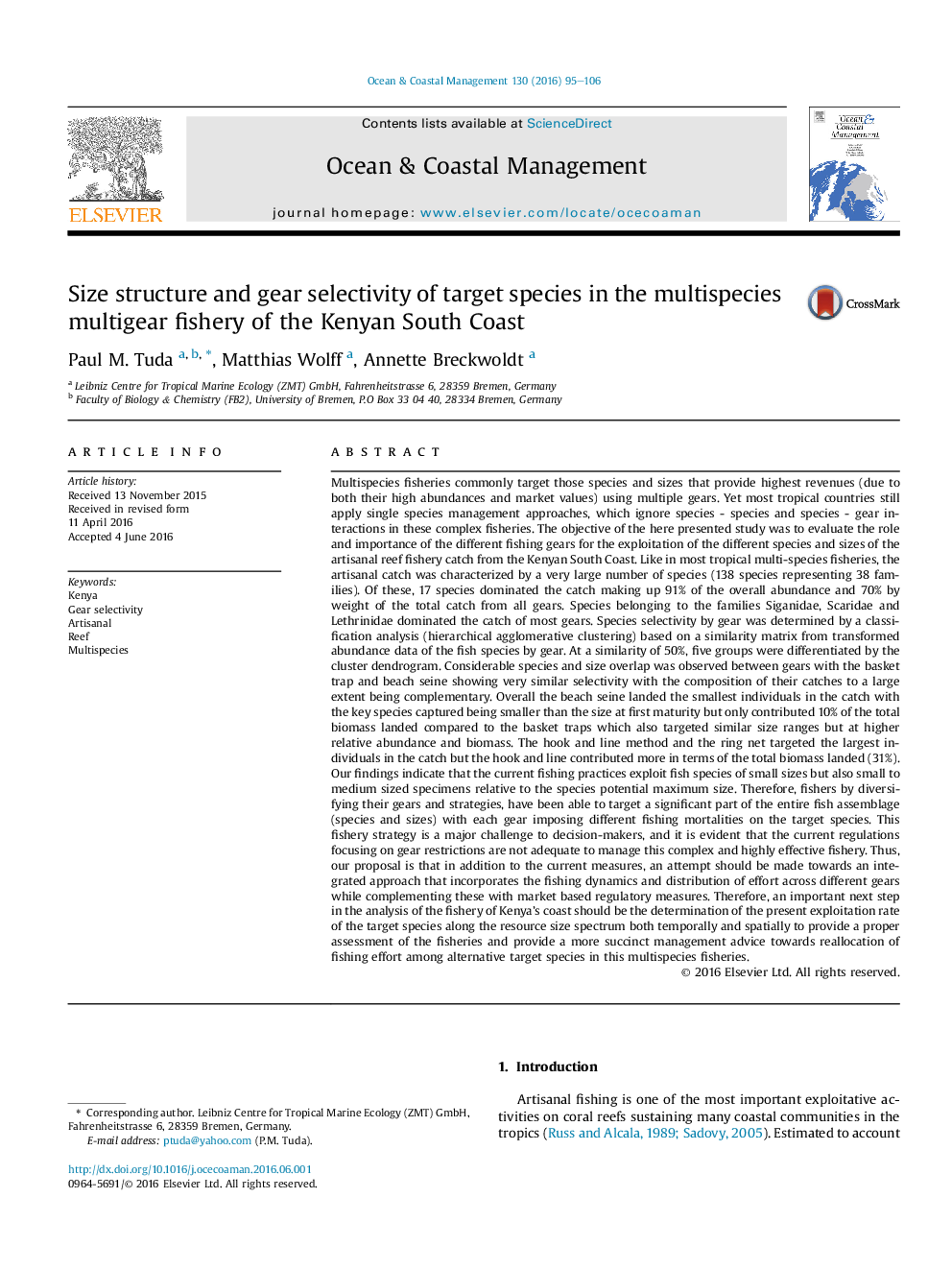| Article ID | Journal | Published Year | Pages | File Type |
|---|---|---|---|---|
| 8061045 | Ocean & Coastal Management | 2016 | 12 Pages |
Abstract
Multispecies fisheries commonly target those species and sizes that provide highest revenues (due to both their high abundances and market values) using multiple gears. Yet most tropical countries still apply single species management approaches, which ignore species - species and species - gear interactions in these complex fisheries. The objective of the here presented study was to evaluate the role and importance of the different fishing gears for the exploitation of the different species and sizes of the artisanal reef fishery catch from the Kenyan South Coast. Like in most tropical multi-species fisheries, the artisanal catch was characterized by a very large number of species (138 species representing 38 families). Of these, 17 species dominated the catch making up 91% of the overall abundance and 70% by weight of the total catch from all gears. Species belonging to the families Siganidae, Scaridae and Lethrinidae dominated the catch of most gears. Species selectivity by gear was determined by a classification analysis (hierarchical agglomerative clustering) based on a similarity matrix from transformed abundance data of the fish species by gear. At a similarity of 50%, five groups were differentiated by the cluster dendrogram. Considerable species and size overlap was observed between gears with the basket trap and beach seine showing very similar selectivity with the composition of their catches to a large extent being complementary. Overall the beach seine landed the smallest individuals in the catch with the key species captured being smaller than the size at first maturity but only contributed 10% of the total biomass landed compared to the basket traps which also targeted similar size ranges but at higher relative abundance and biomass. The hook and line method and the ring net targeted the largest individuals in the catch but the hook and line contributed more in terms of the total biomass landed (31%). Our findings indicate that the current fishing practices exploit fish species of small sizes but also small to medium sized specimens relative to the species potential maximum size. Therefore, fishers by diversifying their gears and strategies, have been able to target a significant part of the entire fish assemblage (species and sizes) with each gear imposing different fishing mortalities on the target species. This fishery strategy is a major challenge to decision-makers, and it is evident that the current regulations focusing on gear restrictions are not adequate to manage this complex and highly effective fishery. Thus, our proposal is that in addition to the current measures, an attempt should be made towards an integrated approach that incorporates the fishing dynamics and distribution of effort across different gears while complementing these with market based regulatory measures. Therefore, an important next step in the analysis of the fishery of Kenya's coast should be the determination of the present exploitation rate of the target species along the resource size spectrum both temporally and spatially to provide a proper assessment of the fisheries and provide a more succinct management advice towards reallocation of fishing effort among alternative target species in this multispecies fisheries.
Related Topics
Physical Sciences and Engineering
Earth and Planetary Sciences
Oceanography
Authors
Paul M. Tuda, Matthias Wolff, Annette Breckwoldt,
